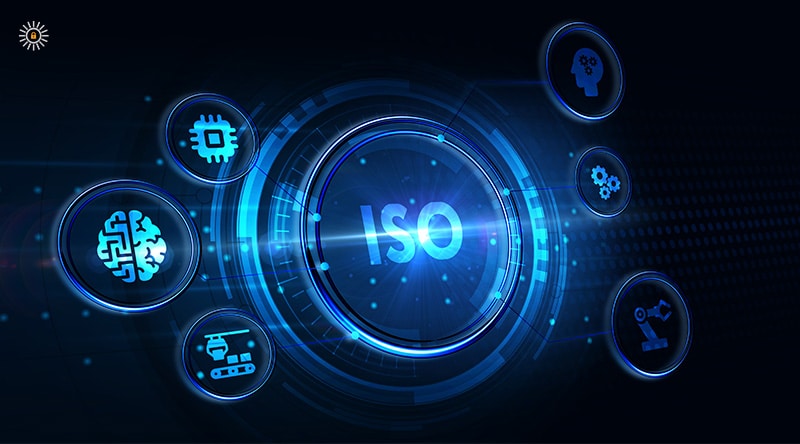- January 17, 2023
- Tags:

Information security encompasses every aspect of business operations in our modern threat landscape. Consequently, it is crucial for companies of all sizes to protect their everyday operations, essential data, and intellectual property against cyber threats. In addition, current cyberattack techniques are increasingly sophisticated and dynamic, requiring a timely and adaptable approach to enterprise resilience building. The recently released ISO 27001:2022 addresses such concerns, emphasizing process orientation in information security management.
The standard provides a framework for protecting sensitive information — such as personal data, financial information, and intellectual property — from cyberattacks, data breaches, and theft. It can also help organizations identify and manage information security risks, improve their overall security posture, and comply with legal and regulatory requirements.
This article explains the recent significant changes in ISO 27001:2022, why these changes are relevant, and how organizations can implement these new changes.
Significant Changes Introduced in ISO 27001
Introducing the “Annex SL” framework is one of the substantial changes in the new ISO 27001:2022 standard. This framework provides a typical structure for all ISO management system standards, including ISO 27001. Moreover, the changes in the standard offer a more significant emphasis on risk management. For example, organizations must conduct a risk assessment and implement specific controls to address any identified risks. Therefore, the most significant change is the increased emphasis on protecting personal data.
In addition, the standard now includes guidance on implementing security controls for personal data and the need for organizations to establish a process for identifying and reporting data breaches. The new standard also includes additional requirements for incident management and business continuity. Organizations must now have the plan to respond to security incidents and maintain business operations during a disruption.
Lastly, the standard also includes new requirements for supply chain security. Organizations must now consider the security risks associated with their vendors, subsidiaries, and suppliers and implement controls to protect against those risks.
Relevance of the Changes and Why It Matters
These changes to the ISO 27001:2022 are relevant because they reflect the evolving nature of information security threats and the increasing importance of protecting sensitive information. As technology advances, organizations are collecting and storing more sensitive data than ever, making it critical to establish and maintain robust information security measures.
The renewed focus on risk management in the ISO 27001:2022 standard is particularly relevant because it acknowledges that information security risks can come from internal and external sources. By requiring organizations to conduct more comprehensive risk assessments, the standard helps organizations to identify and evaluate these risks, so they can take steps to mitigate them.
Integrating ISO 27001:2022 with other relevant standards and regulations is also crucial, allowing organizations to align their information security efforts with other aspects of their business. In addition, the updates to incident response are also relevant since incident management and reporting are crucial components of an effective information security program.
Finally, the emphasis on security culture and continuous improvement is relevant because it acknowledges that information security is not just a technical issue but also a cultural one. When organizations promote a culture of security, their employees become more aware of security risks and are more likely to take steps to protect sensitive information.
Implementing the New ISO 27001:2022
Organizations can implement the recent changes to the ISO 27001:2022 standard by following these steps:
- Conduct a comprehensive risk assessment: The ISO 27001:2022 standard now requires a more comprehensive risk assessment process, which includes identifying and evaluating internal and external risks to the organization’s information assets.
- Align with other relevant standards and regulations: Organizations can align their information security management system (ISMS) with applicable standards and regulations, such as ISO 22301 and GDPR, by identifying the requirements of these standards and incorporating them into their ISMS.
- Develop an incident response plan: Organizations should develop a formal incident management process that includes robust procedures and incident reporting mechanisms. This should consist of identifying potential incident scenarios and planning how the organization will respond in case of an incident.
- Promote security culture: Organizations can create awareness and training programs that educate employees about information security risks, policies, and procedures. This process also includes keeping employees involved in the development and implementation of the ISMS.
- Monitor and Review the ISMS: Organizations can establish metrics to measure the effectiveness of their ISMS and use these metrics to identify areas for improvement. In addition, they should review such metrics regularly to ensure that the ISMS meets government and industry standards and fulfills the overall organizational information security needs.
- Certification: Organizations can seek certification to the ISO 27001:2022 standard to demonstrate their commitment to information security and to assure customers and stakeholders that their data is proactively protected from cyber incidents.
Final Thoughts
The recent updates to ISO 27001:2022 have strengthened the standard by incorporating a more comprehensive risk management approach and emphasizing senior management’s involvement. It also includes new requirements for supply chain security and incident management. Fortunately, these changes reflect the ever-evolving cybersecurity landscape, and organizations need robust and adaptable information security management systems to protect their sensitive information. Undoubtedly, the updates to ISO 27001:2022 are a positive step forward in ensuring that organizations are better equipped to protect themselves from cyber threats and breaches.








